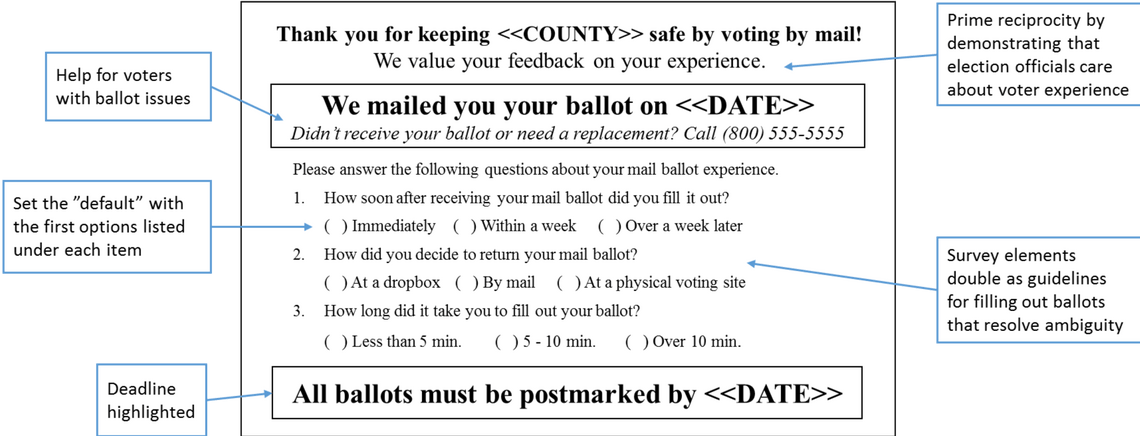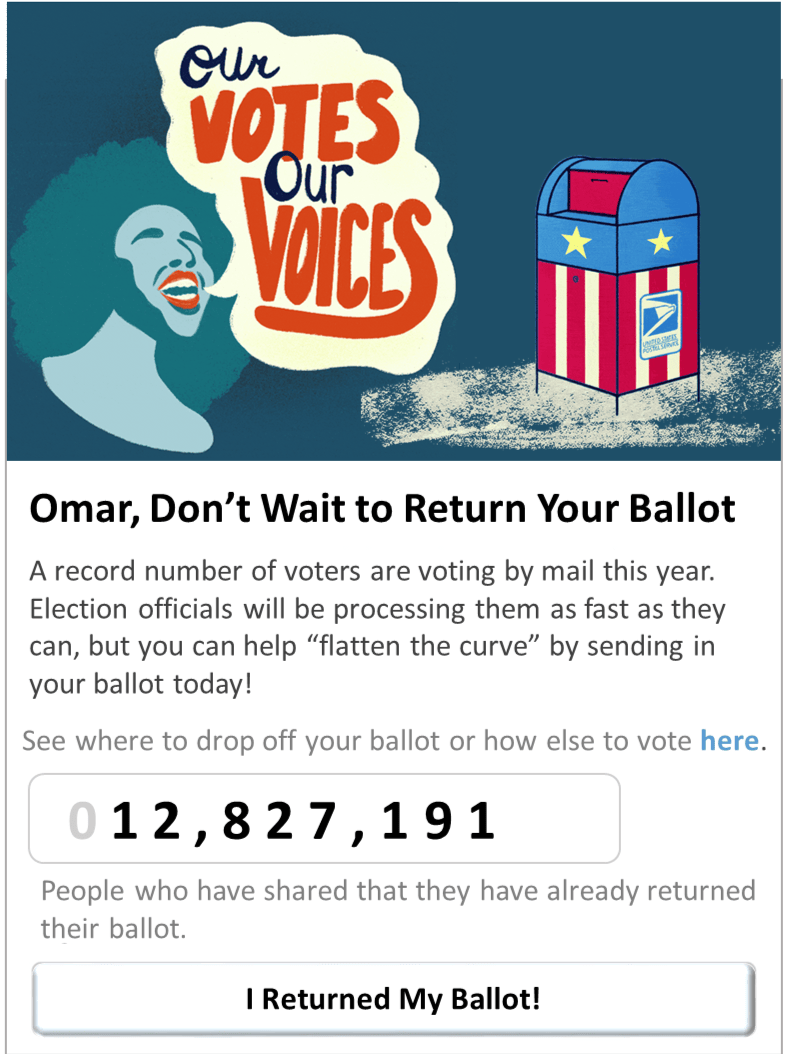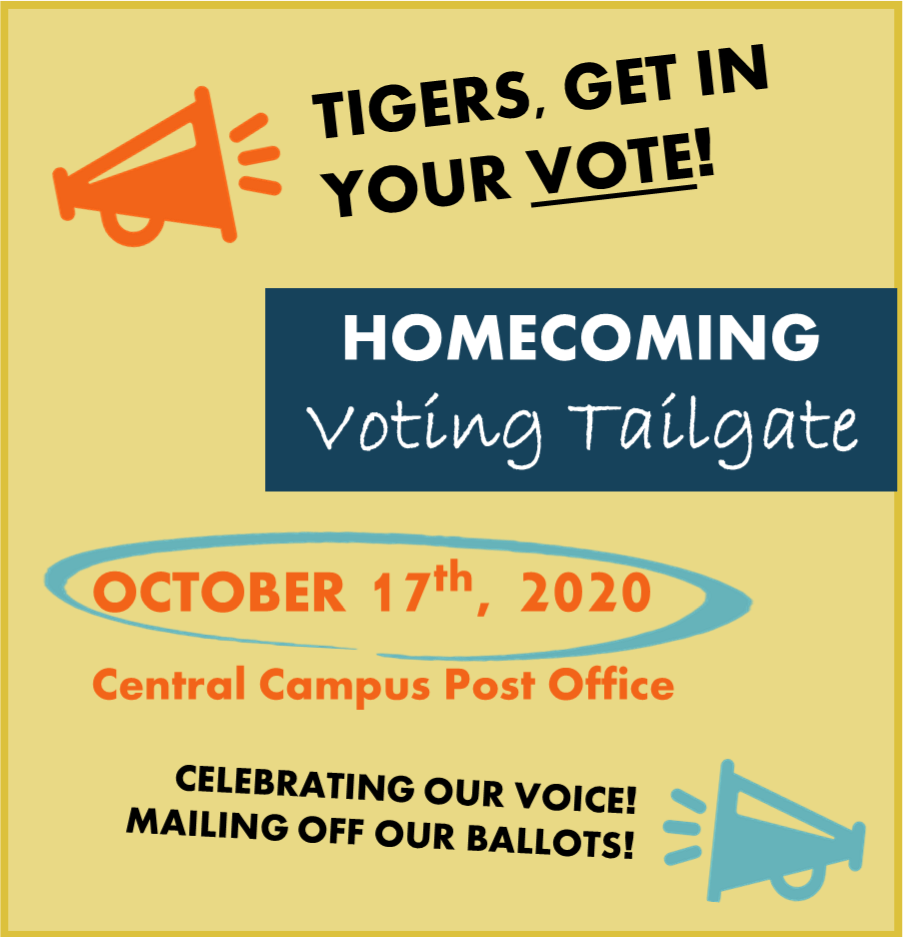HIGHLIGHTS
- Build trust in the voting process while highlighting deadlines
- Present return totals online to encourage others to return ballots
- Normalize help-seeking for first-time mail voters
- Encourage early ballot returns by linking voting to October events
Efforts to ensure voters receive, comprehend, and fill out mail ballots are moot if they never return their ballots. Many voters will get their mail ballots weeks before Election Day, creating a wide window for them to do what we all have a tendency to do-- defer, procrastinate, or otherwise forget to vote. And while many voters will readily embrace voting by mail, others will not be comfortable with, or frankly capable of, returning ballots by mail. Measures to boost confidence in and follow-through on safe and flexible return options for mail ballots will be essential for vote-by-mail systems to reach their full potential and secure this election.
Send voters an official survey about their experience voting by mail to help clarify the process and make ballot return deadlines salient. The survey, framed as a way of soliciting feedback about the process, serves as a non-patronizing reminder for
Send voters an official survey about their experience voting by mail to help clarify the process and make ballot return deadlines salient. The survey, framed as a way of soliciting feedback about the process, serves as a non-patronizing reminder for voters to mail back their ballots. It also clarifies steps and options for safe return and serves as a planning prompt, which behavioral science shows to be an effective tool for supporting follow-through. Concretizing the steps involved in voting by mail, particularly for voters who are new to mail balloting, can help voters translate an intention into action.The request for feedback also signals that officials are dedicated to serving voters well, which can foster broader trust in the election. The survey could be sent via mail, email, text message, or other channels. Physical versions should include return postage to make completing the survey as easy and compelling as possible.
Publicize early return counts on official elections websites and social media pages to help generate positive momentum around early ballot returns and create a norm of returning ballots. In a predominantly vote-by-mail election, voters lack signals about the voting behavior
Publicize early return counts on official elections websites and social media pages to help generate positive momentum around early ballot returns and create a norm of returning ballots. In a predominantly vote-by-mail election, voters lack signals about the voting behavior of their friends and neighbors. First-time mail voters in particular will be looking to their peers for cues on what is “normal” when it comes to voting by mail, and these normative signals can help shape voter behaviors in ways that “flatten the curve” of the entire balloting process. Social media platforms themselves can similarly present how many users have indicated that they’ve returned their ballots drawing from user data or election data.
Give first-time mail voters the confidence needed to navigate vote-by-mail systems by normalizing uncertainty and asking for help should they need it. Official sites, social media outreach, and other communications should elevate language that assures voters that support is available
Give first-time mail voters the confidence needed to navigate vote-by-mail systems by normalizing uncertainty and asking for help should they need it. Official sites, social media outreach, and other communications should elevate language that assures voters that support is available and that questions are welcomed. Millions of voters will be using mail ballots, ballot drop boxes, or other aspects of the vote-by-mail process for the first time and may hit roadblocks along the way. The ambiguity first-time mail voters will likely face may lead them to disengage from the process – especially if they see the roadblocks as indicative of their own lack of preparedness. Officials should head off concerns by proactively inviting voters to access resources and communicate that questions are common, expected, and welcomed.
Tie ballot returns to a date or event with meaning for a community of voters to encourage them to send in their votes well before November 3rd. Millions of voters will procrastinate or feel they need to wait until election
Tie ballot returns to a date or event with meaning for a community of voters to encourage them to send in their votes well before November 3rd. Millions of voters will procrastinate or feel they need to wait until election day to send in their ballots, straining the system and running the risk of missing return deadlines. Organizers can mitigate these issues by using salient dates to encourage voters to return their votes ahead of deadlines. For example, student groups could use their university homecoming as a focal point to mobilize their classmates. This moment of action can make voting feel social, urgent, and empowering. And it uses positive pressure to encourage early returns. The alternative would be to raise concerns about ballots not being received in time, which could undermine confidence in the integrity of the election.










